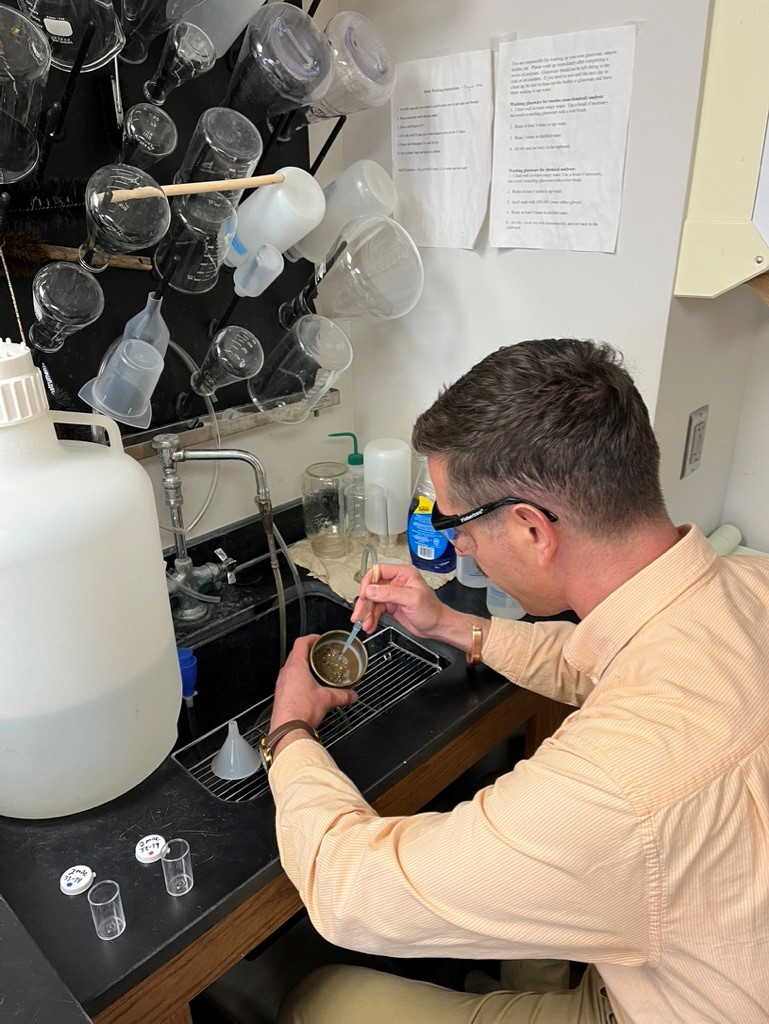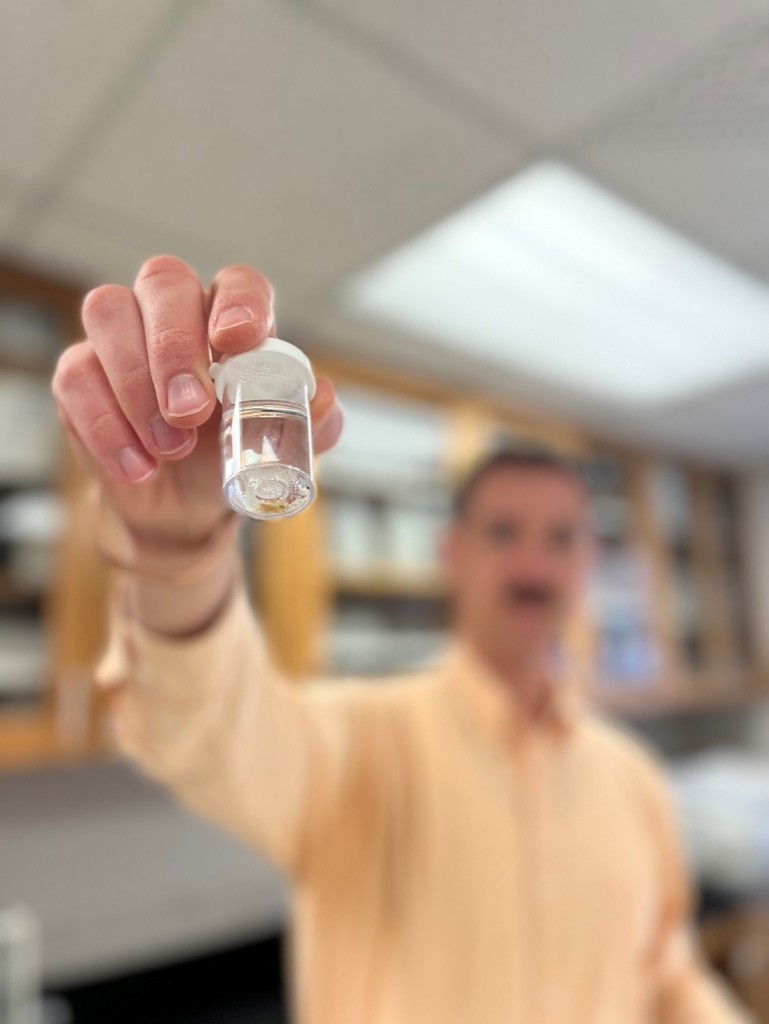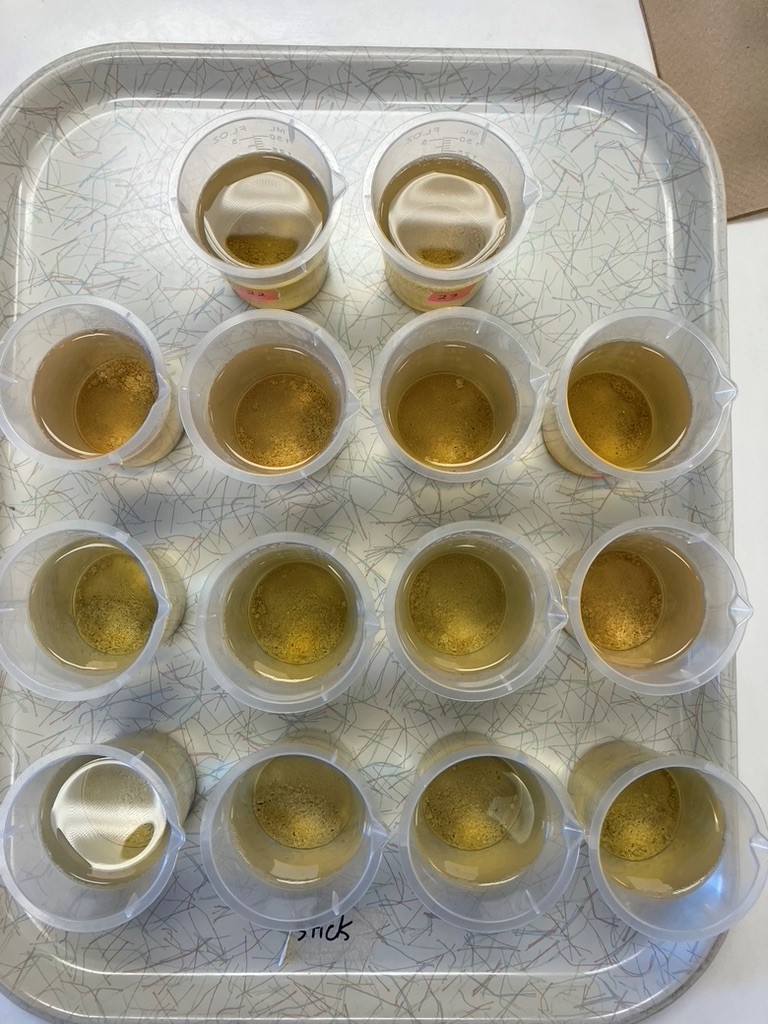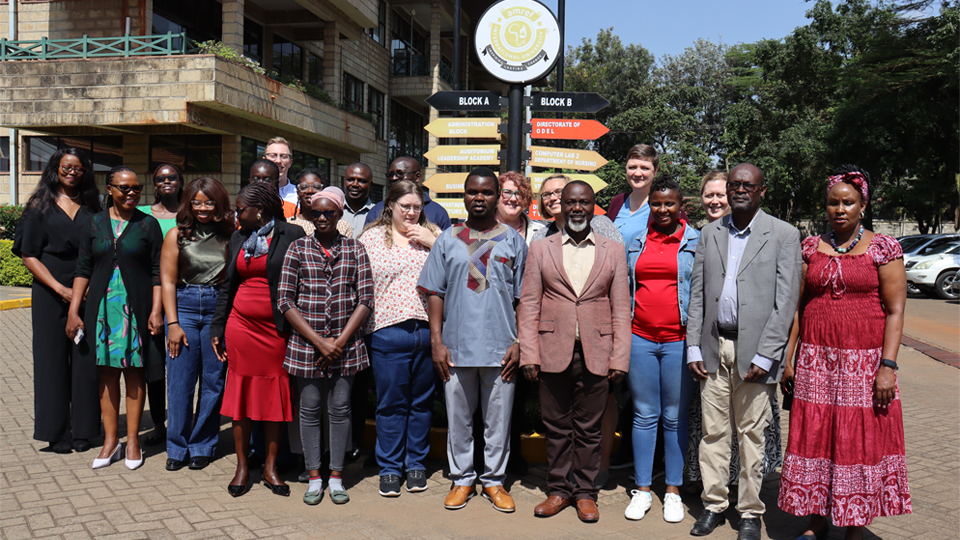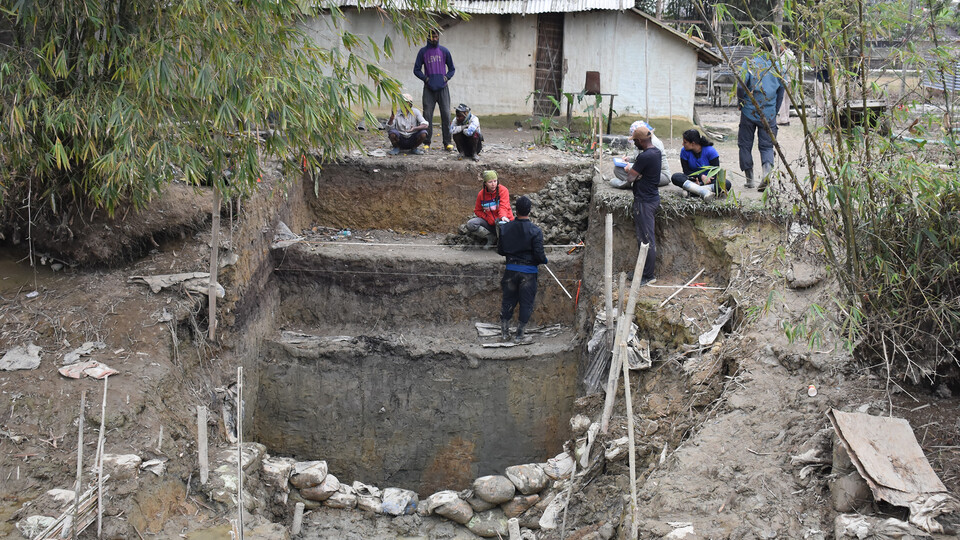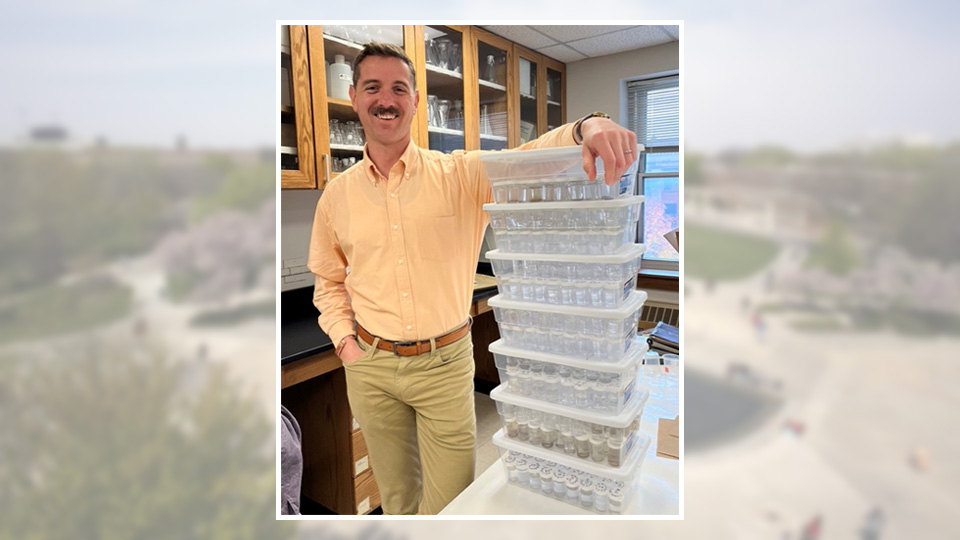
By James Benes
Most afternoons, in a lab in Bessey Hall, James Benes is busy processing charcoal samples. As a geography Ph.D. student in the School of Global Integrative Studies and a graduate fellow for the Center for Great Plains Studies, he analyzes fire history by taking cores from lakes or wetlands and then processing and sieving the charcoal particles within the core, centimeter by centimeter.
“The charcoal particles can tell you a lot about the reconstructed fire history,” he said. “It’s a common phrase in paleo-research: the past is the key to the present.”
Benes specifically studies fire history of the northern Great Plains, including multiple sites in the Nebraska Sand Hills. He sees recent events like the fires in Lancaster County and Halsey National Forest as an urgent need to know more. Large portions of southern Lancaster County and huge swaths of Nebraska’s National Forest burned in the most recent fires. These fires claimed the state’s only fire lookout tower, an historic 4-H lodge, and many homes and agricultural land.
“Other researchers at UNL have shown that wildfires increased in recent years, and their projection for future years show more increases,” he said, referring to research conducted by Victoria Donovan, a former postdoc in the Department of Agronomy and Horticulture in the Extreme Fire Research Lab led by Dirac Twidwell, associate professor.
With projected increases in burning, Benes said it's important to know more about how landscapes responded to fires in the past. Questions remain about the relationship to fuels, or flammable vegetation, during wetter versus drier periods in the region.
“During drier times, there is less vegetation, so does that mean more burning or less burning?” he wondered aloud as he continues to process the samples for microscopic bits of charcoal. Scientific studies on that topic have shown mixed results in the northern Great Plains—again highlighting the need for more data. Eventually, the tiny specs of charcoal will be counted under a microscope and then analyzed with regional data.
Benes hopes to bring a clearer understanding about the interaction of fire on the landscape through time.
“Humans have a vested interest in fire—it’s a natural element that is intrinsic to the ecological systems of which we are so beautifully integrated—so it’s essential we know as much as we can about its nature,” he said, placing another processed sample vial in line to be counted.
Images above courtesy of Jason Yoo.
